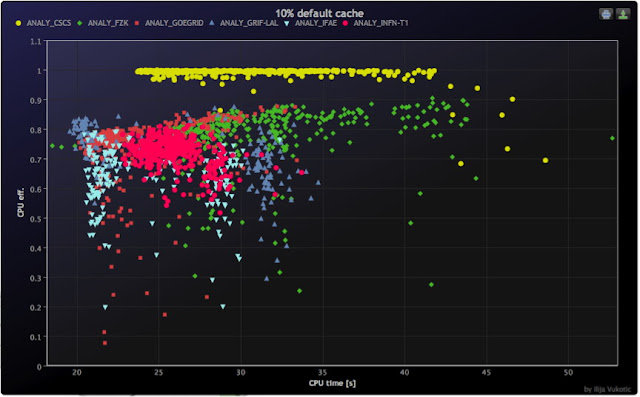On March 14, IBM announced the creation of a new clinical genomics analytics platform to help physicians and administrators at Italy's Fondazione IRCCS Instituto Nazionale dei Tumori make decisions about which treatments could work most effectively for individual patients.
This effort in personalized medicine, or choosing specific treatments based on a patient’s personal genetic profile, is an important new area that could take some of the guesswork out of treating diseases like cancer and AIDS.
"Data from patients is a gold mine that helps us discover ways to treat other cases more successfully," said Boaz Carmeli, a healthcare researcher at IBM Research – Haifa. Carmeli's team has been leading the research into how clinical genomics can use data to get deeper insights into medical processes and how computers can be used to evolve and improve those processes.
"Before beginning this research, I always thought that when we get sick the doctor will tell us what treatment will work best," said Carmeli. "In reality, although we can have one diagnosis, there are many treatment options available. Choosing the best one depends on a huge number of factors, including our genetic profile, age, weight, family history, general health, and the current state of the disease."
The new Clinical Genomics analysis platform, also known as Cli-G ('clee-gee'), integrates and analyzes clinical data and evidence from patient records and incorporates expertise gathered from leading medical specialists, clinical healthcare guidelines, and other sources of knowledge. Clinicians access the system through a standard web browser, which offers a simple and intuitive graphical user interface.
Cli-G is a cousin to IBM Watson, the deep question-and-answer technology that beat two past-champions at the Jeopardy! TV quiz show. Both are learning systems. While Watson focuses primarily on gathering unstructured textual information from published sources, Cli-G is aimed at gathering specific types of information. Carmeli and his colleagues have coined a term, Evicase, to describe the way they structure information. It’s a combination of evidence-based medicine, which is statistical analysis of treatment outcomes, with case-based reasoning, which is knowledge gathered by studying the best practices of top physicians. Scientists in IBM Research are exploring how Cli-G and Watson could be used to compliment one another.
The project grew out of a long-term effort by IBM’s Haifa scientists to develop a network that every party involved in healthcare delivery can tap into to share information. Cli-G adds sophisticated analytics to the network. The technology uses all of the information available to predict the most likely outcomes for a particular patient for various treatment options. Then, based on Evicase, it recommends what it considers to be the best treatment.

"Most physicians base their treatment decisions on guidelines from what is known as 'evidence-based medicine'," explained Carmeli. "These guidelines stem primarily from the results of clinical trials, and help guide doctors with rules for what treatment works best. But how relevant are these rules for an 80-year-old woman where no treatment at all may represent the best option?
“The clinical trials don't cover all populations and other evidence doesn't take into account factors such as the patient's emotional state, lifestyle, family history, or genetic profile."
In 30 to 40 percent of the cases, physicians formally declare that they are recommending treatment options outside the evidence-based medicine guidelines. The IBM solution gathers data from hospitals to gain insight into what was done in these cases, alongside information from other knowledge sources – including the physicians themselves.
"When we started the project, we had many questions on when and why physicians stay within – or diverge from – the guidelines," said Carmeli. "There are no clear answers, but we do see many different personalities, disciplines, hospital cultures, and patients. So, the alternatives are different for everyone."
By analyzing the cases, identifying trends, and then introducing formalistic tools, IBM researchers aim to provide insight into treatment options and allow the physicians to investigate the reasoning behind these options.
One example of how this solution can help is in the area of breast cancer. Medical research discovered that certain genetic sequences can indicate whether a breast cancer patient is predisposed to respond positively to chemotherapy – but the test used to identify this genetic sequence is expensive and hospitals are not sure it's worthwhile.

Today, adjuvant chemotherapy or hormonal therapy helps treat breast cancer in about 30 percent of the cases. Yet treatment is being given to 80 percent of breast cancer patients. As a result, more than half the patients are receiving treatment that will not help them. Using Cli-G, medical staff can verify whether the tests can accurately identify the different cases and predict the effectiveness of the treatment.
"Computers are used nowadays to provide support and assistance wherever possible," explained Carmeli. "We don't expect to know or remember everything, but many of us walk around with mobile devices that allow us to have extensive knowledge at our fingertips.
"The same support can make healthcare work smarter … We envision a world in which physicians also have immediate access to the value of decision support provided by technology. In the end, this ultimately enables patients to get the best possible treatment."
Links:











